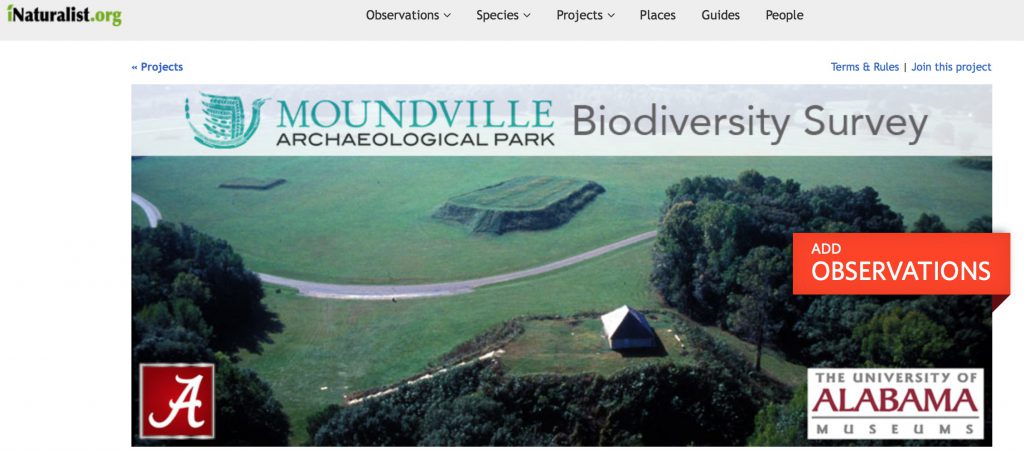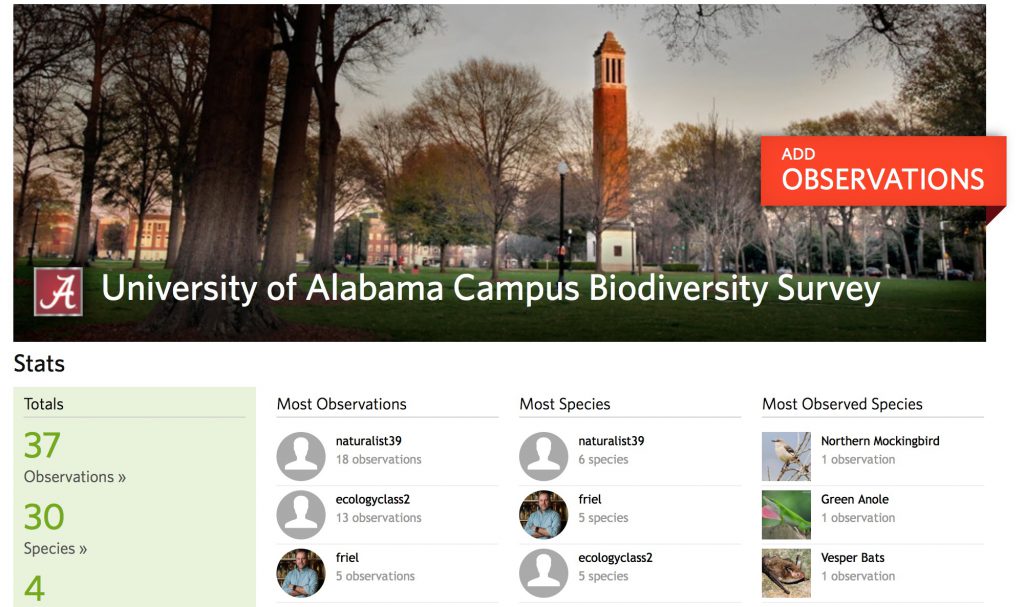 TUSCALOOSA, Ala. — Each day, regular people are observing the natural world, collecting data and assisting researchers and scientists with discoveries. Staff members of The University of Alabama Museums hope to use that knowledge.
TUSCALOOSA, Ala. — Each day, regular people are observing the natural world, collecting data and assisting researchers and scientists with discoveries. Staff members of The University of Alabama Museums hope to use that knowledge.
The Moundville Archaeological Park Biodiversity Survey and The University of Alabama Campus Biodiversity Survey are two data collecting projects recently created on iNaturalist, an online social network of naturalists, citizen scientists and biologists built on the concept of mapping and sharing observations of biodiversity across the globe.
“At its essence, Citizen Science allows anyone to participate in real science by volunteering for a project,” said Dr. John Abbott, director of Museum Research and Collections. “Specifically, it allows for the collection and analysis of data by members of the general public as part of a large project in collaboration with professional scientists. It has gained in popularity because for the scientist, it provides a large data gathering work force that would otherwise not be available, and for the general public, there is tremendous pleasure in knowing that you are actually contributing to real science.”
Visitors to Moundville Archaeological Park or to the UA campus can take pictures of plants and animals and upload the images to iNaturalist to identify the different species. Visitors can also time stamp and provide GPS coordinates of where they saw what within the confines of the park or campus. Observations may be added through the iNaturalist website or from a mobile application.
“The goal of these projects is to classify as many different living species as possible,” said Betsy Irwin, Moundville Archaeological Park education outreach coordinator. “Through this project, we can make connections with UA biologists and their students. We will also develop educational materials to send out to teachers and schools to encourage them to participate in this survey while taking field trips to the park and the Alabama Museum of Natural History.”
All pariticipants need are camera and an enthusiasm for discovery, Abbott said.
“We started these surveys for two main reasons,” he said. “First, it allows us to know what is there, that is it provides us a mechanism to collect data that ultimately allows us to be better stewards of these properties. Having long-term data sets for properties is rare but of tremendous value for looking at questions of diversity, distribution, life history and ultimately climate change.
“The second reason for initiating these projects is they provide an opportunity to engage and educate the public,” Abbott said. “This is a core mission of the UA Museums and goes beyond just exhibits in buildings. It provides an opportunity for us to engage in a meaningful way with the Tuscaloosa community.”
For more information or to make observations, visit http://www.inaturalist.org/projects/university-of-alabama-campus-biodiversity-survey (University of Alabama Campus Biodiversity Survey) and http://www.inaturalist.org/projects/moundville-archaeological-park-biodiversity-survey (Moundville Archaeological Park Biodiversity Survey).
Contact
Kim Eaton, UA media relations, 205/348-8325 or kkeaton@ur.ua.edu
Source
Dr. John Abbott, 205/348-0534 or jabbott1@ua.edu; Betsy Irwin, 205/371-2234 or birwin@ua.edu; or Dr. John Friel, director of the Alabama Museum of Natural History, 205/348-2136 or jpfriel@ua.edu
